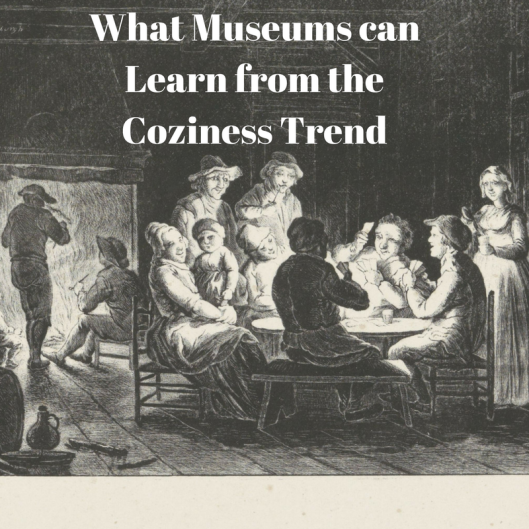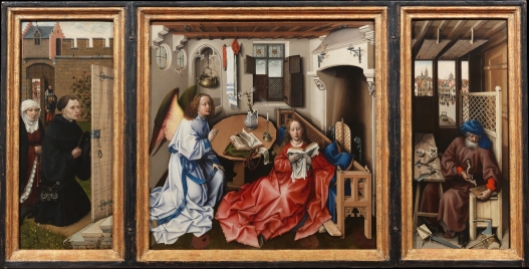
The Danish word hygge is hard to translate. Books like the Little Book of Hygge, often translate the word as coziness. These authors go on to share how that word is but a scarce approximation of its actual meaning. This Danish cultural norm, a sort of way of being, is central to that nation’s high level of happiness.
Currently Pinterest is alight with hygge with pictures of arm knit blankets, roaring fires, and mugs of warm coffee. Strictly speaking, hygge is about home life, but there are certain tenets that could help make art museum’s more appealing.
Create Sanctuary
Sanctuary is a place of refuge or safety. Art museums can feel like a sanctuary for those who already feel comfortable there. But, there are unspoken codes of behavior. Innocently point at artwork and you might catch the ire of a guard. Bring a selfie stick, and you will meet another guard. Should you wish to find a restroom, you will likely need to find another guard to help you find the way. The signs are so subtle that they fade into the background. In many ways, the challenge for museums is that they are only sanctuaries for those who are already initiated. Yet, most museums profit, both fiscally and culturally, from attendance. So, how can they help others see these spaces as a sanctuary?
Belonging is Key
Belonging is a central element in hygge. When you belong, you feel comfortable participating in the experience. Belonging is hard for museums, in certain ways. Museums has many special interest groups, starting with the trustees, and moving down to the members. These groups often revel in their connection to the museum, and why shouldn’t they, as they paid for the privilege.
How can museums make all people feel like they belong in the museum community? This is the big question for museums. There is no one golden bullet, oh if there was. But, there are small steps. Let’s go back to the guards. They are basically the hosts to this party. They spend more time with the visitors than any other department. The Walker Art Museum has a wonderful staff, dressed in t-shirts and broad smiles, who makes sure to place welcoming visitors and safeguarding the art as equally important.

Human Scale
The human touch is essential in hygge. Think about your most convivial moments in life. There was the food, the décor, the music. Or was it the people, their stories, their laughter. People turn settings into stories. In large spaces, the quality of human interaction is dissipated. In intimate, human-sized spaces, you can engage with people in direct ways. This is the same with art. Small spaces encourage connectivity. For better or for worse, I became an art historian because of the Cloisters. In high school, I trekked to see the oil paintings in their glory. I still remember stepping through a tiny door into an irregularly shaped room to gaze upon the Merode altarpiece. This small work, resplendent in its workmanship, seemed to fill the space.
Human scale is not just about architecture. Few museums have the architecture of the Cloisters. Human scale is also about choosing to employ the space in ways that focus on people. Seating groupings imply that one should linger. Legible labels, rather than tiny print, implies that one should read.
In its essence, hygge is about setting the stay for most people to have an enjoyable experience. In many ways, most art museums focus on installing art with an eye towards education and learning with little concern for the visitor’s pleasure. Yet, how can people learn if they don’t linger?